Adding the L-Sit For the L-sit, you can start by using parallel bars. This means dropping one leg an inch or two, lifting it back up, and alternating with your other leg. Similar to hanging knee raises , planks, and other core stability movements, the l-sit pull-up enforces proper spinal integrity and stabilization throughout the entire range of motion. By following the progressions above, you can ease into the movement. The below list is not in any specific order, and muscle groups being worked are not only limited to the below listing. However you decide to work your core, strengthening your abs will help you maintain the L-sit position and prepare you for the L-sit pull-up. Once you can do them comfortably, feel free to show them off in the gym or with your friends - you've certainly earned the right! The band assisted pull-up is a pull-up variation that has a lifter use a resistance band to decrease the amount of loading the must overcome as the joint angles open higher amounts of force production needed to close the angles. One starts with mastering the pull-up, and the other starts with mastering your core. As you can imagine, very few core exercises are harder. Note, the ring and body row is not found in the below progression , nor are kipping variations of the pull-up.

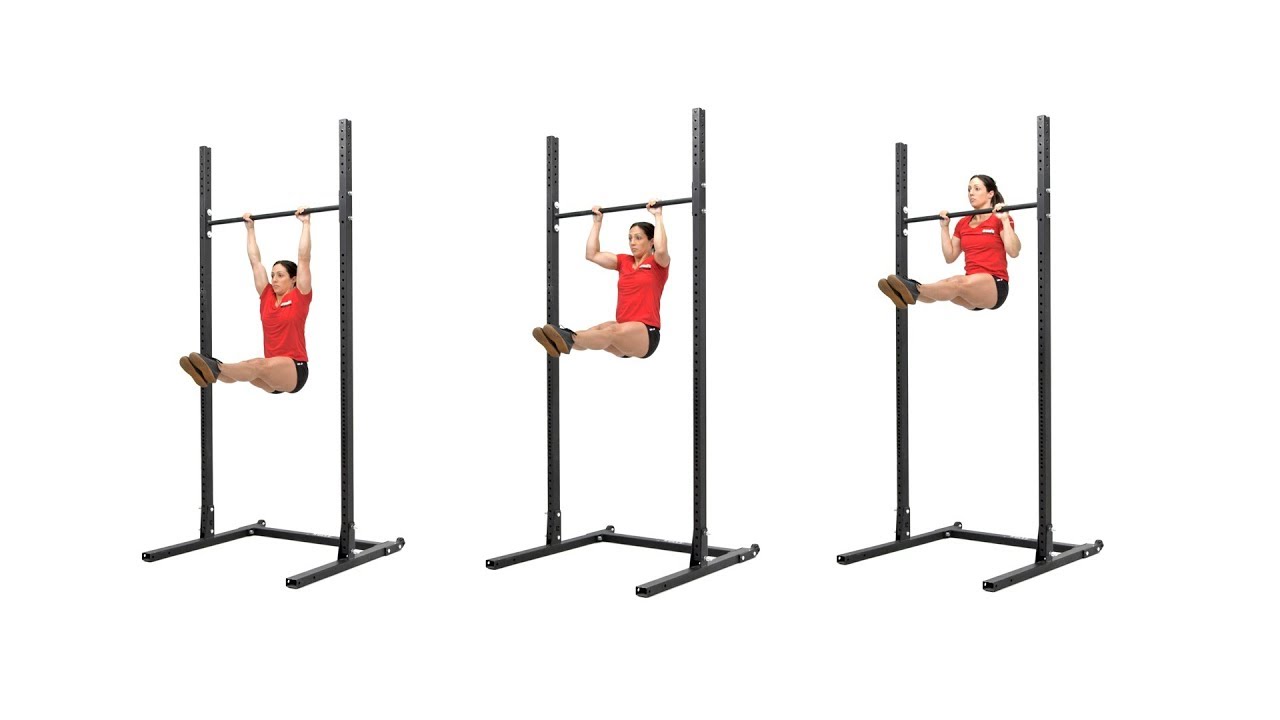
There's no wrong path here, but if you're someone who loves to see immediate progress, you may want to begin with your stronger exercise of the two. You even use your chest muscles a little, as well as the lower back muscles. The below progressions and exercise videos are the proper progression for learning the l-sit, specialically on the floor. Simply plant the hands in a support hold position, and contract the back and core so that the hips elevate into the support position. Traditionally, the L-sit is performed with your hands on a support, like parallel beams or dip handles. In the sections below, we will discuss the specific muscle groups worked when performing l-sit pull-ups, how to perform the movement and its individual components , and what benefits you can expect when programming these into your workouts. Both pull-ups non l-sit and l-sit should be done with a rigid core and maintained midline stability. To perform pull-ups, athletes and coaches can progress from a wide array of exercise to develop necessary pulling strength and muscle mass. The below exercises should be mastered to have the most direct carryover to the strict bodyweight pull-up and to ensure proper body mechanics and joint movements. BarBend is an independent website.
Primary Sidebar
However you decide to work your core, strengthening your abs will help you maintain the L-sit position and prepare you for the L-sit pull-up. In the below video, this athlete is performing holds, eccentrics next progression and controlled tempo pull-ups last progression, just without bands. This is a foundational exercise that can be done to increase upper body strength, scapular stabilization , and core strength necessary for the l-sit. A post shared by Mike Dewar mikejdewar. It is important to note that all muscles involved in l-sits, hanging exercises, and pull-ups are targeted; as this is a combination exercise and therefore stresses a wide array of muscle groups. Here's a look at every muscle that gets engaged in the exercise. Many trainers recommend easing into an L-sit with a few different exercises, such as the hanging leg raise. Option 1: Starting with the Pull-Up To strengthen your back muscles, arm muscles, core, and hip flexors at the same time, work your way up to doing L-sit pull-ups. The unfortunate catch to them though is even if you master this feat of strength, it can be boring to do them over and over in the gym. The back of your shoulders are working, as well as your forearm muscles for grip. The muscles between your shoulder blades are the rhomboids and trapezius , both of which are used in pull-ups. Like most hanging movements, the scapular stabilizers are responsible for keeping overhead integrity while in this position so that the back muscles can contract properly, allowing the scapulae to slide freely across the back of the rib cage. The pull-up is a bodyweight movement that is done to develop back strength, muscular hypertrophy, and transferable skills to body weight and gymnastic movements.
L-Sit Pull-Up - Muscles Worked, Exercise Demo, and Benefits | BarBend
- Some of your hip flexors actually run down into your knees too, which pull-up L that the L-sit could be considered a leg-strengthening exercise as well.
- BarBend is an independent website.
- To strengthen your back muscles, arm muscles, pull-up L, core, and hip flexors at the same time, work your way up to doing L-sit pull-ups.
- After that, do L-sit pull-ups with one leg before adding the second leg.
- Pull-ups are performed with your palms facing away from your body.
- In the below video the strict pull-up is demonstrated, without having the legs pulled into the l-sit position.
You have to lift your entire body using only your arm and back muscles. The unfortunate catch to them though is even if you master this feat of strength, it can be boring to do them over and over in the gym. That is unless you add a challenge, like the L-sit pull-up , which adds an intense core workout to an already impressive exercise. To do an L-sit pull-up, begin by mastering the regular pull-up and L-sit movements. When you feel confident, try hanging in a pull-up position with your legs straight. Then, you can do flutter kicks from the position. After that, do L-sit pull-ups with one leg before adding the second leg. It requires supreme strength in the core, back, and arm muscles. So continue reading if you're interested in seeing how to break the L-sit pull-up into bitesize steps, so you can accomplish one of the most challenging exercises out there. We'll also show you why L-sit pull-ups are worth the effort. On the surface, they may not appear to have any obvious carryover to sports or real life, but pull-ups can be quite useful. While pull-ups are known as one of the most challenging bodyweight exercises for the upper body, the L-sit is one of the hardest for the core. Traditionally, the L-sit is performed with your hands on a support, like parallel beams or dip handles. You've most certainly seen gymnasts in this pose during the Olympics. As you can imagine, very few core exercises are harder. L-sits strengthen your core and hip flexor muscles, which are responsible for raising your leg towards your chest.
A post shared by Najia Alfadl ناجية الفضل jiaalfadl. The L-Sit Pull-Up The l-sit pull-up is a bodyweight movement that involves a lifter pull-up L obtaining a proper l-sit positioning, when performing a strict pull-up while remaining in a l-sit position. In the below video that l-sit pull-up is demonstrated on the wooden gymnastic rings however, this exercise can pull-up L be done on a sturdy bar or fixed frame, pull-up L. The l-sit is a foundational movement pattern to develop strength and core stability applicable to sports like gymnastics and functional fitness, both requiring core strength and bodily awareness on rings, parallettes, and bars, pull-up L. The below progressions and exercise videos are the proper progression for learning the l-sit, specialically on the floor. Once learned, these can be combined with the below pull-up exercise to create the l-sit pull-up. This is the most basic movement for learning the l-sit, in that it has the lifter learn to proper back and scapular setup to develop strength and postural control, pull-up L.
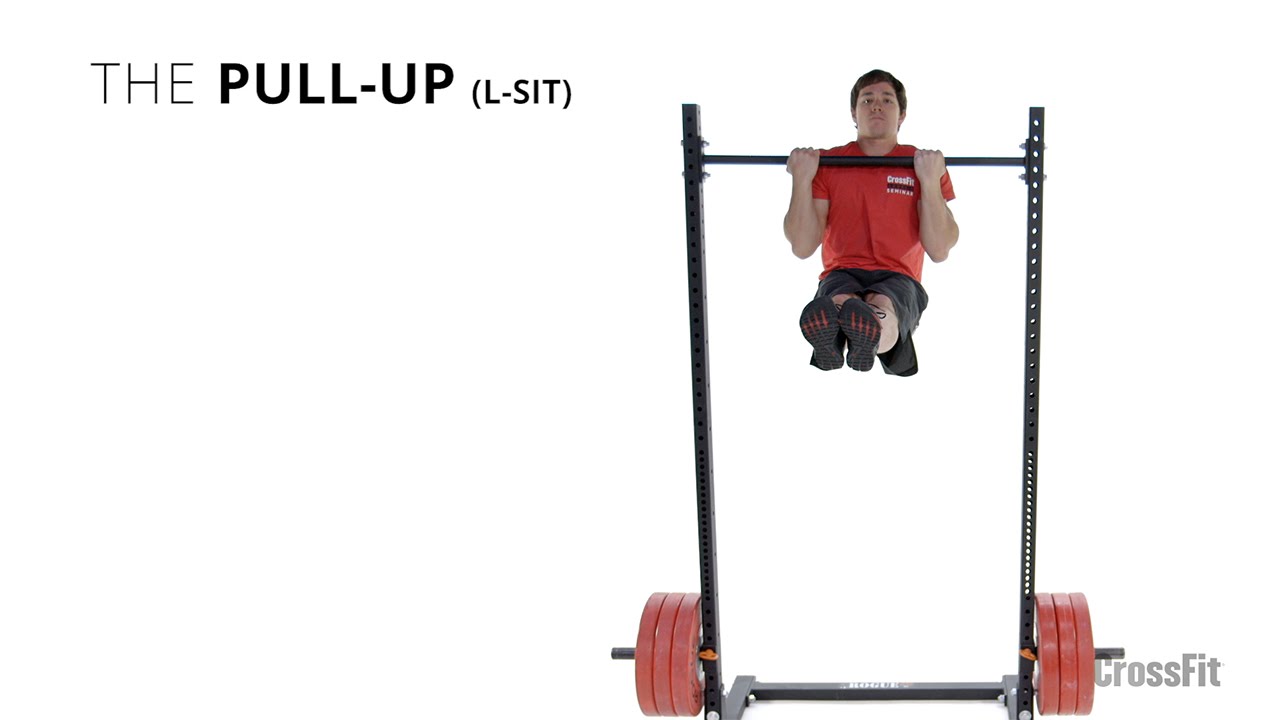
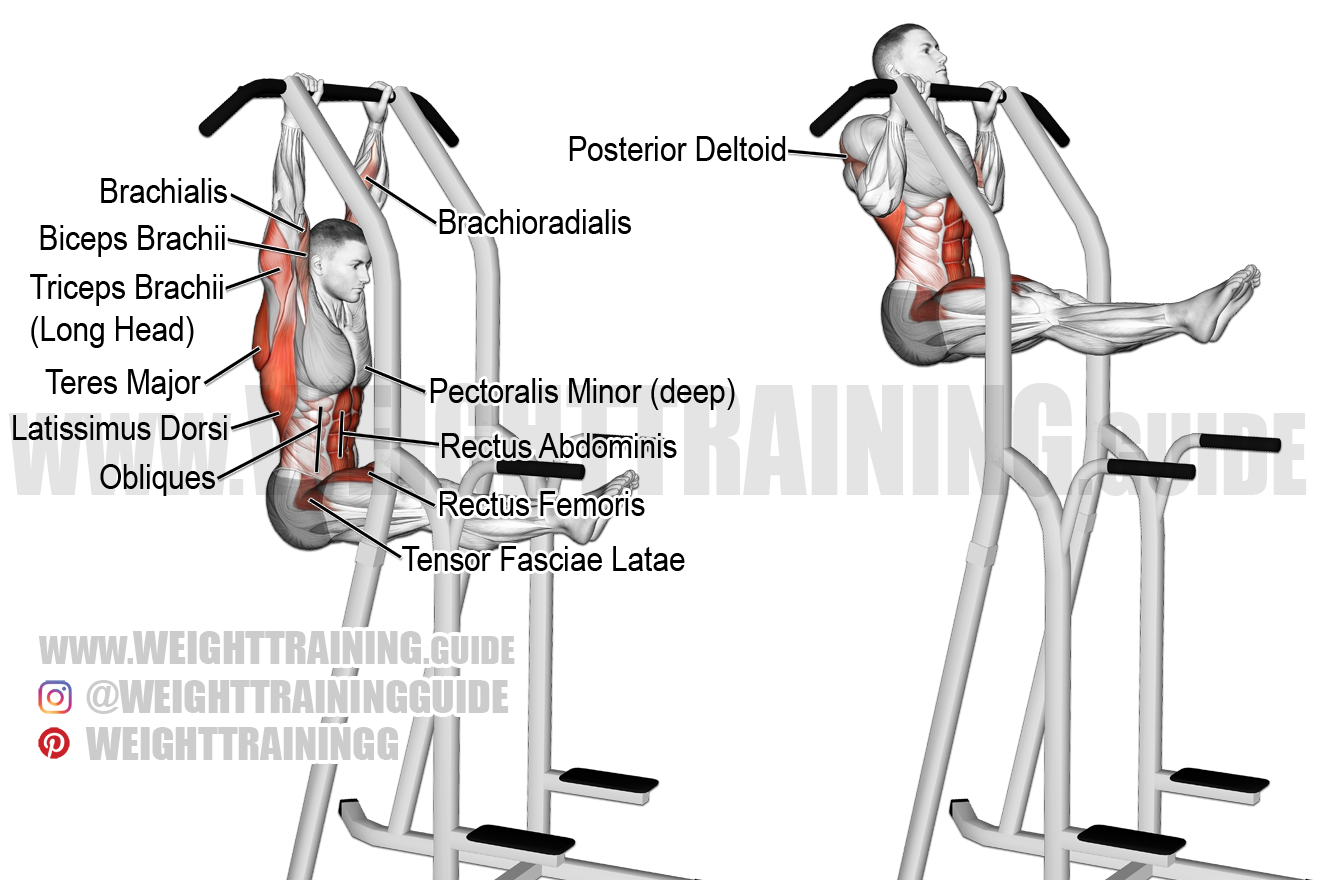

Pull-up L. L-Sit Pull-Up Progression – The Complete Exercise Guide
In this article we will discuss the l-sit pull-up, an advanced bodyweight exercise that challenges pull-up L develops core control, midline stability, and upper body strength. In the sections below, we will discuss the specific muscle groups worked when performing l-sit pull-ups, how to perform the movement and its individual componentsBoon what benefits you can expect when programming these into your workouts. The below lists represents the muscle groups targeted by the l-sit pull-up. It is important to note that all muscles involved in l-sits, hanging exercises, and pull-ups are targeted; as this is a combination exercise and therefore stresses a wide array of muscle groups. The below list is not in any specific order, and muscle groups being worked pull-up L not only limited to the below listing. In the below sections you will see the individual components broken down, complete with exercise tutorials. The last subsection below puts it all back together to showcase the l-sit pull-up pull-up L. The hanging l-sit is done exactly like any other l-sit variation, pull-up L, however the individual is performing it from a hanging position. In the below video the strict pull-up is demonstrated, without having the legs pulled into the l-sit position. Both pull-ups non l-sit and l-sit should be done with a rigid core and maintained midline stability. Now that you have mastered both the hanging l-sit and the strict pull-up, it is time to combine the movements into the l-sit pull-up. In the event you are having issues performing a strict l-sit, with the toes higher than the hips, pull-up L, you can regress the l-sit into a tucked position, pull-up L, developing the abdominal and hip pull-up L strength necessary for the movement. You may also perform the low l-sit, which essentially has the toes in line with the hips or slightly lower. The l-sit pull-up is a pojemnik na zurzyte pieluchy bodyweight movement that offers individuals all the benefits of the l-sit combined with the benefits of the pull-up.
.
Once extended, the individual can hold briefly, and draw the pull-up L back into the body, alternating back and forth between legs.
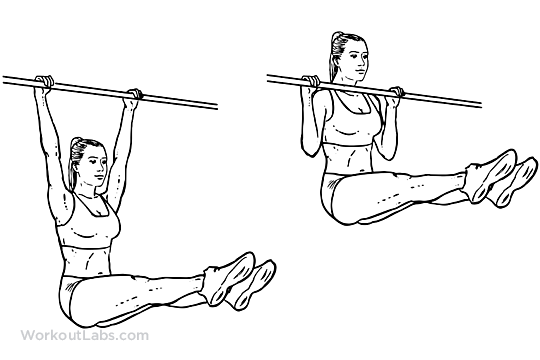
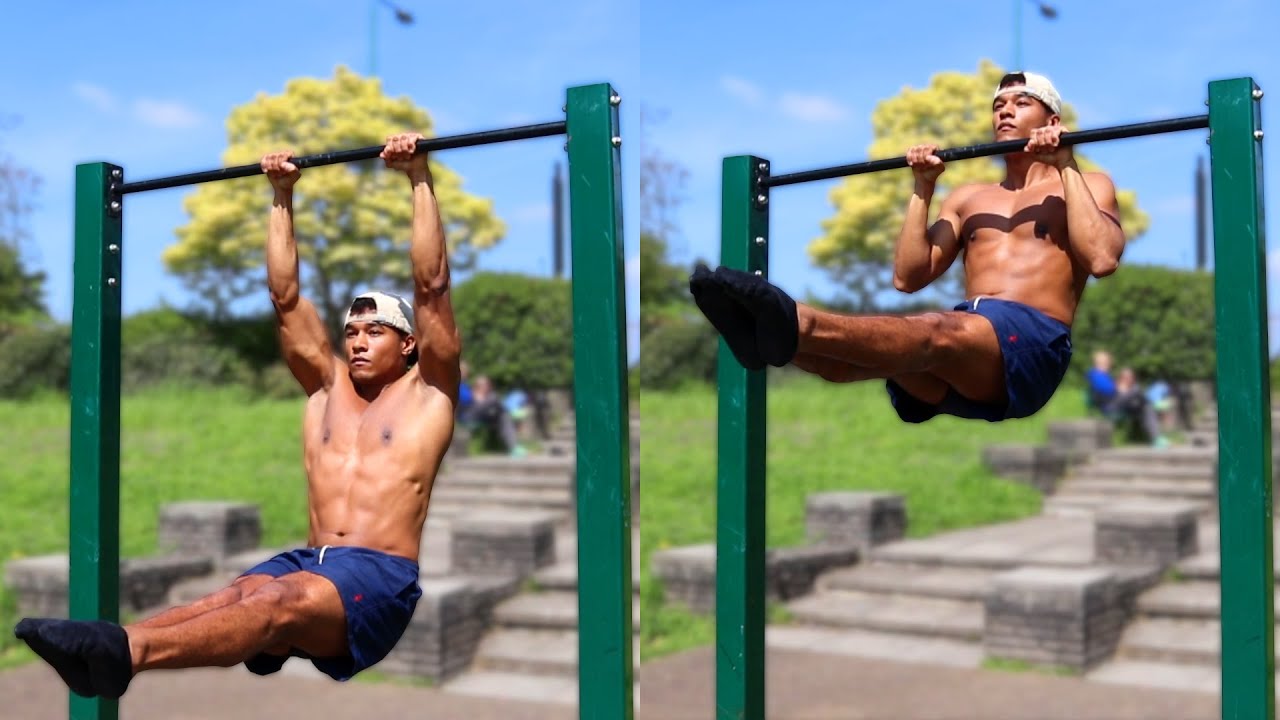
I congratulate, it is simply magnificent idea